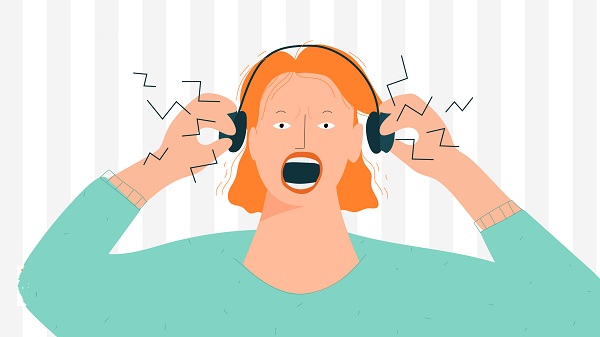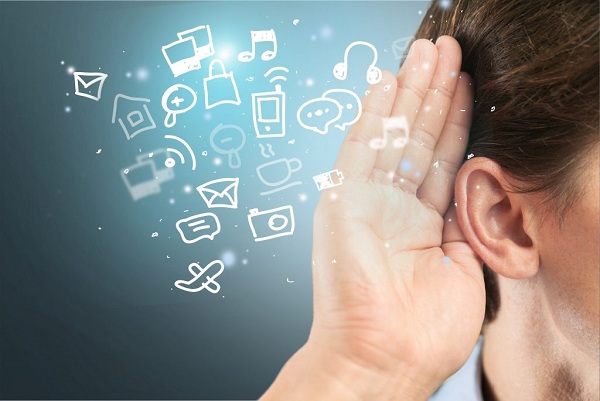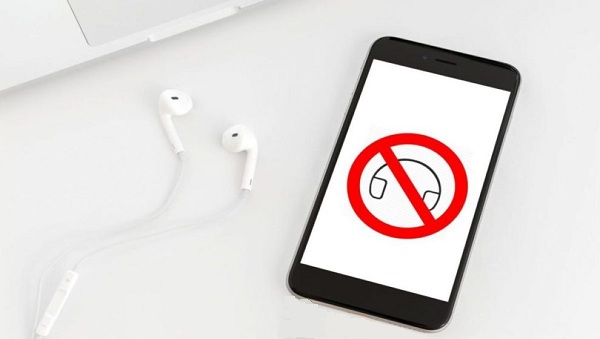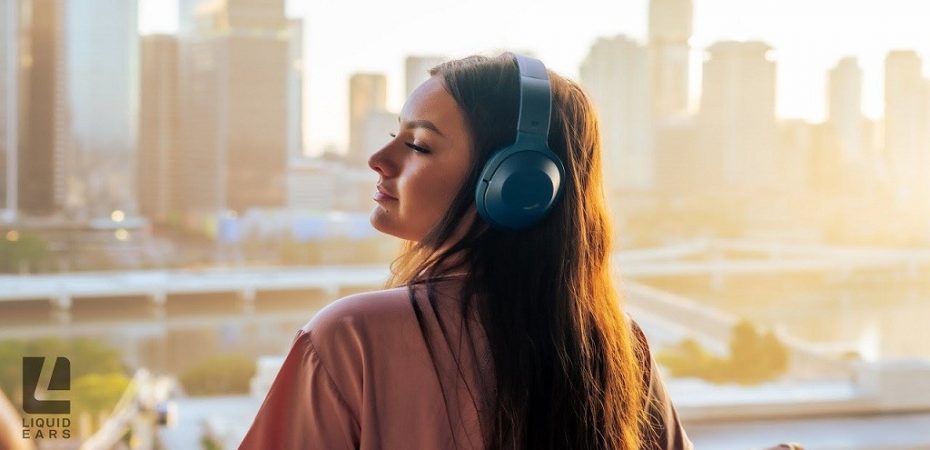Ever since Apple introduced its headphones back in 2016, the wireless earphone industry has boomed. According to research, the market has seen a growth of USD 60 Billion, and this is said to grow more in the years to come. As a result, the headphone culture amongst people has risen, and today 31% of people use headphones on a daily basis.
This makes it imperative for all of us to know what are safe decibel levels and what decibel level is harmful. To make it easier, we have combined all that you need to know about safe volumes for headphones and how can the negative impact of loud music be avoided. We advise you to stay tuned till the end, so you know what steps need to be taken to keep your ears damage-free.
4 Ways to Check If Your Headphones Are Too Loud

1. Check the Volume Control
There’s no doubt that some music sounds excellent when played louder. It’s also relatively easy to turn up the volume when your favorite song starts playing. However, it is critical to establish positive habits by keeping the volume below 60% of the total volume.
It’s too much for your ears if it creeps up to more than two-thirds of the volume control or more than 60%. Hearing loss does not happen overnight, but it can be avoided by checking volume levels frequently.
2. Use a Sound Meter to Measure Sound Level
A decibel meter, often known as a sound meter, is a device that measures sound levels in decibels (dB). You can use the decibel table above to see if your headphones are too loud for you with this device. To make it easier, we have a few steps that can assist you in checking sound levels:
- Pair your earphones with your audio input and listen to a song and sound at a suitable volume.
- Turn on your decibel meter while wearing your headphones.
- Place the decibel meter mic directly inside one of your headphones’ earcups. The decibel meter’s LED screen should automatically display the current dB.
3. Hold Your Headphones in Infront of You
Another test we suggest is establishing whether or not you can hear your headphones from a distance.
Remove your headphones while the music is still playing and keep them at the same volume level as before. Then, hold them out in front of you at arm’s length. Is it possible for you to hear the music? If that’s the case, try turning it down and repeating the process.
4. Check Signs of Hearing Loss
You may be already experiencing hearing loss and aren’t aware of it. Listening to your headphones at a high volume can cause this. Loud noise can overwork and destroy the hair cells in your ear, causing you to lose your hearing over time. Check for the following symptoms:
- Ringing, clicking, roaring, hissing, or buzzing in the ears
- Difficulty in hearing in noisy places
- Muffled sounds.
- An increasing need to keep turning the volume high.
What are Decibels?

Decibel levels or sound pressure levels are used to indicate loudness. The numbers are based on 1.0 decibel (dB) – the level at which all sounds are amplified by 1.0 and beyond. So, for example, a noise of 80dB is equivalent to a 100-decibel noise level, and a 20dB noise is equal to 40 decibels, etc.
What decibel level is harmful?
For all those wondering what safe decibel levels are, you need to know a decibel level is a unit used to measure sound pressure. It has a value between 0 and 100, with 100 being the loudest noise. So between a scale of 0 and 100, between 60 to 80 decibels are safe decibel levels. Your volume can be on this scale or reach 85 decibels, but make sure it isn’t too high because it could result in excessive ear damage.
Those wondering what decibel level is harmful should know that anything in the range of 90 to 100 is unsuitable for your ears and can surely damage them.
Safe Volume For Kids

In a digitalized era like ours, more and more children now have a tablet and phones in their hands. This means they interact with music videos and sounds daily. This is why parents need to know safe decibel levels for kids and the hours they should be allowed to hear. This will ensure your child keeps away from potential damage to their hearing capacity.
| Maximum Hours of Exposure to Sounds | Level of Sound (DBA) |
| 8 hours | 90 dba |
| 6 hours | 92 dba |
| 4 hours | 95 dba |
| 2 hours | 100 dba |
| 1 ½ hour | 102 dba |
| 1-hour | 105 dba |
| ½ hour | 110 dba |
| 45 minutes | 115 dba |
The most effective approach to preserve your child’s hearing and development is to use a volume limiter and to avoid the damage altogether, try to keep headphones away from your kids. But the table that we have here may help if your child is exposed to music. To make things even easier, we have ways to turn off headphone safety from your phones to avoid any damage whatsoever.
How to Turn Off Headphone Safety

There are many things that one should be aware of when it comes to headphones. The first is that there are safety tips for headphones, but not everyone is aware of them. To help you stay safe, we have listed a few ways to turn off headphones’ safety on your iPhones and Android to avoid damage to your ears.
2 Ways to Turn Off Headphone Safety in iPhones
If you regularly listen to loud music while wearing headphones, we don’t recommend deactivating Headphone Safety on your iPhone. For those who do not know Headphone Safety? Listening to loud music for long periods might compromise your hearing over time. Instead, use the Reduce Loud Sounds function to raise the decibel level. This function allows you to adjust the decibel level of your headphones, which is set to 85 dB by default.
Apple suggests changing your device type to “Speaker” if you use external Bluetooth headphones. Both of these options will allow you to listen to music at higher audio volumes without switching off Headphone Safety.
But if you still want to learn How to turn off Headphone safety, then follow the two methods we have here for you:
Method 1
- Open the Settings application on your iPhone.
- Click on Accessibility on your iPhone.
- Now scroll down to the Hearing section on your phone and tap on the Audio and Visual option.
- Turn Headphone Notifications off.
- Voila! It’s done.
Method 2
- Start by opening Settings
- Now tap on the Sounds and Haptics on your iPhone.
- Then click on the Headphone Safety
- Now turn the headphone notifications toggle off.
- You have now turned the headphone safety off.
Easy Way to Turn off Headphones Safety in Android
If your Android phone is stuck in earphone mode, there are multiple scenarios. It’s always a good idea to start with quick solutions before moving on to the more difficult ones.
- Reconnect your headphones to your phone.
- Clean the jack on your headphones.
- Reboot your Android device.
- Perform a soft reset on your device.
- Override audio controls with an app.
- Perform a factory reset or a hard reset.
Measures to Adapt Safe Listening Habits

1. Get Noise-cancelling Headphones
Headphones are frequently used to block out background noise, enabling us to focus on the task at hand. The dilemma is that the higher we turn up the volume, the louder the ambient noise gets. Active noise reduction is a technology that restricts outside noise by creating a sound signal that cancels out background sounds. Those who wonder, “is noise-canceling bad for your ears” should know noise-canceling headphones are using this technology. This involves listening to music at a lower volume level and reduces the likelihood of needing to increase the volume as time goes on.
2. Decrease the Volume
Lowering the volume when listening to music is the most helpful approach to protect your hearing. Isn’t it rather basic? Experts advise that the volume should be set to no more than 60% of the maximum. Your hearing may be harmed if the music coming from your headphones is loud enough for others to hear.
3. Implementing the 60/60 Rule-Time
Stay away from music daily to allow your ears to rest will help you avoid long-term hearing loss. Professionals recommend implementing the “60/60 rule,” which includes listening to music at 60% of your device’s max volume for 60 minutes and then taking a break.
4. You Should Set a Limit:
Most smartphones and other gadgets have settings that allow the user to set a maximum volume restriction. Check your listening device’s user manual to see if this is an option.
5. Drop Earbuds and Get Headphones
Earbuds have been incredibly popular in recent years, especially as cellphones have become more prevalent. In contrast to headphones worn over the ear, these little silicone or plastic devices are implanted directly in the ears. It’s a minor distinction, but it matters the closer the sound source is to your eardrum, the more likely you are to suffer hearing loss.
Takeaway
Safe volume for headphones isn’t just crucial in adults, but it is for all age groups who have exposure to music regularly. It is imperative you know which decibels levels are harmful and which are safe, and the purpose of all this is to prevent any damage to your ears.
Damage to your ears may not happen swiftly, but it indeed is, and by taking some of the safety methods that we have listed here for you, you can easily prevent further problems.
Read also:

